How to Tell If Your Nose Job Is Healing Properly
Undergoing rhinoplasty is a significant step toward achieving your desired facial harmony. As you navigate the recovery process, it's essential to recognize the signs of proper healing to ensure optimal results. We understand the nuances of post-operative care and are here to guide you through each stage of your healing journey.
Understanding the Healing Timeline
Rhinoplasty recovery is a gradual process, typically unfolding over several months:
-
Week 1: Initial swelling and bruising are common. A splint may be applied to support the new nasal structure.
MyHealth Alberta - Weeks 2–4: Swelling begins to subside, and bruising diminishes. You may start to see the preliminary shape of your nose.
- Months 1–3: Continued reduction in swelling, especially at the nasal tip. The nose starts to refine and settle into its new form.
- Months 6–12: Final results become more apparent as residual swelling resolves. The nose achieves its intended contour and definition.
Note: Individual healing times may vary based on factors such as skin thickness, surgical technique, and adherence to post-operative care instructions.
Signs of Proper Healing
Recognizing the indicators of healthy recovery can provide reassurance:
- Gradual Reduction in Swelling: Swelling should consistently decrease over time, with noticeable improvements each week.
- Diminishing Bruising: Bruising around the eyes and nose fades progressively, typically resolving within two weeks.
- Improved Nasal Breathing: Breathing through the nose becomes easier as internal swelling subsides.
- Stable Nasal Shape: The nose maintains its new shape without unexpected shifts or asymmetries.
- Absence of Severe Pain: While mild discomfort is normal, severe or escalating pain may indicate complications and should be addressed promptly.
Enhancing Recovery with Nose Perfect
To support optimal healing and refine your results, consider incorporating the Nose Perfect Nasal Shaping Device into your post-operative regimen. Developed by board-certified plastic surgeon Dr. Paul E. Chasan, this innovative device offers several benefits:
- Replaces Traditional Taping: Eliminates the need for cumbersome and often irritating adhesive tapes.
- Comfortable and Reusable: Designed for ease of use, providing gentle yet effective support to the healing nose.
- Targets Supra-Tip Swelling: Applies precise pressure to reduce swelling in the nasal tip area, promoting a more defined contour.
- Recommended Usage: Begin using the device 2–3 weeks post-surgery for 2–4 hours daily, adjusting duration based on comfort and surgeon guidance.
Always consult with your surgeon before introducing any new post-operative tools into your recovery plan.
When to Consult Your Surgeon
While minor irregularities are common during the healing process, certain signs warrant immediate medical attention:
- Persistent or Worsening Swelling: Swelling that doesn't subside or intensifies over time.
- Severe or Increasing Pain: Pain that escalates rather than diminishes.
- Signs of Infection: Redness, warmth, discharge, or fever.
- Breathing Difficulties: New or worsening obstruction in nasal airflow.
Promptly addressing these concerns with your surgeon ensures timely intervention and supports a smooth recovery.
Monitoring your healing progress after rhinoplasty is crucial for achieving the desired aesthetic and functional outcomes. By understanding the typical recovery timeline, recognizing signs of proper healing, and utilizing supportive tools like the Nose Perfect Nasal Shaping Device, you can actively participate in your recovery journey. Always maintain open communication with your healthcare provider to address any concerns and ensure the best possible results.
